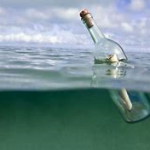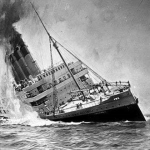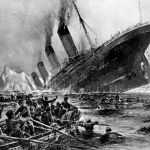ship
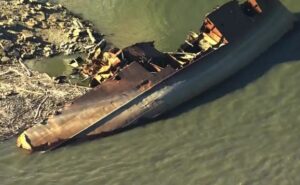
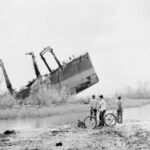 Some years are filled with rainy and snowy days, while others are drought filled, like this one. Each can have their consequences, if things go too far. As drought in the United States has progressed this past year, lakes and rivers have dried up, including the widest river…the great Mississippi River, which is not nearly as wide or as deep as it used to be. The reality is that suddenly, the Mississippi is bone-dry in some places. The average depth of the Mississippi River is normally 9 to 12 feet, with the deepest point being 200 feet. As with any river that is deep enough to run big boats or even little ones, invariably, there comes a sinking or two.
Some years are filled with rainy and snowy days, while others are drought filled, like this one. Each can have their consequences, if things go too far. As drought in the United States has progressed this past year, lakes and rivers have dried up, including the widest river…the great Mississippi River, which is not nearly as wide or as deep as it used to be. The reality is that suddenly, the Mississippi is bone-dry in some places. The average depth of the Mississippi River is normally 9 to 12 feet, with the deepest point being 200 feet. As with any river that is deep enough to run big boats or even little ones, invariably, there comes a sinking or two.
Sometimes, boats that sink can be recovered, and sometimes they can’t. The ship might be at a depth that makes it impossible, or the right equipment might not be available. Whatever the reason, in just about any body of water, there are bound to be a few mysterious finds hiding beneath the surface. As the Mississippi River has gone through the drought this year, there are the expected myriad of boats that are now stranded and languishing on dry land, but there are also a few surprises that are starting to appear. Some of the ships are old, but some are not as old, like the Diamond Lady, a casino boat that used to grace the mighty river. The Diamond Lady was christened in 1991, and was used in Iowa for a time, but in 2019, as things in Iowa got tough, the beautiful casino boat sailed south to an unknown fate in the mighty Mississippi River. The boat had been stored in Lake McKellar, but sank in 2021 during a freeze. Now it has resurfaced again. It’s not the oldest relic in the Mississippi River and the surrounding waterways, but it might have been the most majestic.
Unfortunately, there are sad finds in the river too. The drought has unearthed a sunken 19th-century shipwreck and human remains in the Mississippi River. I’m sure these won’t be the only human remains that suddenly surface, because while drowning victims are often found, there comes with a gambling a certain element that 
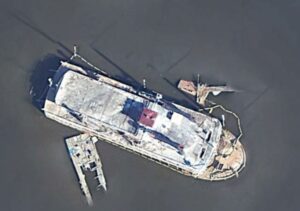 often brings the mysterious deaths, whether they are murders or just mysterious deaths whose cause cannot be determined. I’m sure there will be more ship, and possibly more bodies that turn up too. Then, before too long, the waters will return, and the mysteries will once again be hidden beneath the surface of the rivers and lakes.
often brings the mysterious deaths, whether they are murders or just mysterious deaths whose cause cannot be determined. I’m sure there will be more ship, and possibly more bodies that turn up too. Then, before too long, the waters will return, and the mysteries will once again be hidden beneath the surface of the rivers and lakes.
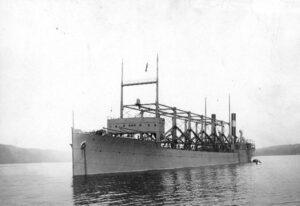 When a ship sinks, we expect to be able to find it, or at least find out where it went down. With radios, making it possible to receive a “May Day” call, we expect to be able to pinpoint the location of the floundering ship. Unfortunately, that isn’t always the case. Sometimes, no matter how hard we search for the ship, plane, and even car, but the search seems to be in vain. I think it is more common to have a search without success when it comes to a ship or even a plane in the ocean. It is so hard to see something that is so far below the surface. Still, it seems like after a century or more, there should be some breakthrough…shouldn’t there.
When a ship sinks, we expect to be able to find it, or at least find out where it went down. With radios, making it possible to receive a “May Day” call, we expect to be able to pinpoint the location of the floundering ship. Unfortunately, that isn’t always the case. Sometimes, no matter how hard we search for the ship, plane, and even car, but the search seems to be in vain. I think it is more common to have a search without success when it comes to a ship or even a plane in the ocean. It is so hard to see something that is so far below the surface. Still, it seems like after a century or more, there should be some breakthrough…shouldn’t there.
A 550-foot-long naval ship, USS Cyclops debuted in 1910. The ship was a bit of a jack-of-all-trades, so to speak…at least in it’s early days. It moved coal around the seas, as well as providing aid to refugees. Then, during World War I, USS Cyclops became a naval transporter. In 1918, the Cyclops, with it’s crew of 306 people and 11,000 tons of manganese, sailed from Brazil. The ship made a stop in Barbados and then sailed on toward Baltimore. Somewhere along the way, it disappeared. Strangely, there was no SOS made. It was as if the ocean had swallowed the ship up. Now one knew exactly where to look for it, because it had sailed quite a ways from its last known location. Maybe if there had been a distress call of any kind, they could have had a general location. Without that, they didn’t know if it had gone off course, or how fast it was traveling, so there was no way to be sure. It was thought that the Cyclops may have gone down in  the Puerto Rico Trench. The waters there run very deep, which would have made it very difficult to located the ship in 1918. Still, there was another hazardous area…the Bermuda Triangle, and some people thought that might be to blame.
the Puerto Rico Trench. The waters there run very deep, which would have made it very difficult to located the ship in 1918. Still, there was another hazardous area…the Bermuda Triangle, and some people thought that might be to blame.
The US Navy calls the tragedy of Cyclops, “The disappearance of this ship has been one of the most baffling mysteries in the annals of the Navy. All attempts to locate her have proved unsuccessful.” To this day, the original Cyclops has never been found. Many other ships that were lost at sea have been found, many that were lost before Cyclops, but there has been no sign of Cyclops. The mystery of Cyclops might never be solved, and considering the lives lost, that is very sad indeed.
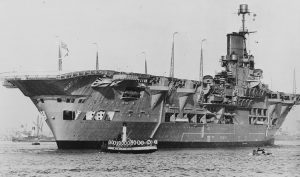
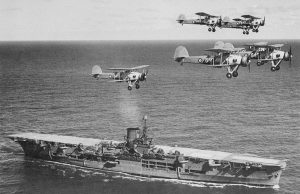 World War II brought with it necessary changes to war ships. Suddenly, the world had planes that could fly greater distances, and even had the ability to land on a ship, provided the ship was big enough to have a relatively short runway. I say relatively short, because the runways on ships seemed like they would be too short to safely land a plane, but they did. One such ship was the HMS Ark Royal.
World War II brought with it necessary changes to war ships. Suddenly, the world had planes that could fly greater distances, and even had the ability to land on a ship, provided the ship was big enough to have a relatively short runway. I say relatively short, because the runways on ships seemed like they would be too short to safely land a plane, but they did. One such ship was the HMS Ark Royal.
The Ark Royal was an English ship designed in 1934 to fit the restrictions of the Washington Naval Treaty. The ship was built by Cammell Laird at Birkenhead, England, and was completed in November 1938. The design of this ship differed from previous aircraft carriers, in that Ark Royal was the first ship on which the hangars and flight deck were an integral part of the hull, instead of an add-on or part of the superstructure. This ship was designed to carry a large number of aircraft. There were two hangar deck levels. HMS Ark Royal served during a period of time during which we first saw the extensive use of naval air power. The Ark Royal played an integral part in developing and refining several carrier tactics.
HNS Ark Royal served in some of the most active naval theatres of the World War II. The ship was involved in the first aerial and U-boat kills of the war, operations off Norway, the search for the German battleship Bismarck, and the Malta Convoys. After Ark Royal survived several near misses, she became known as a “lucky ship” and the reputation stuck…at least until November 13, 1941, when the German submarine U-81 torpedoed her and she sank the following day. Nevertheless, only one of her 1,488 crew members was killed. Her sinking was the subject of several inquiries. While only one man was killed, investigators still couldn’t figure out how the carrier was lost…in spite of efforts to tow her to the naval base at Gibraltar. In the end, they found that several design flaws contributed to the loss. These flaws were rectified in subsequent British carriers. There was, of course, no time to look for the ship then. The war was still going on.
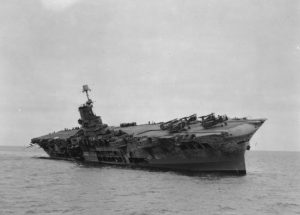
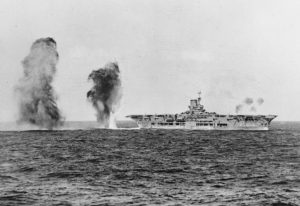
The wreck was discovered in December 2002 by an American underwater survey company using sonar mounted on an autonomous underwater vehicle. The company was under contract from the BBC for the filming of a documentary about the HMS Ark Royal. The ship was at a depth of about 3,300 feet and approximately 30 nautical miles from Gibraltar. So close, and yet so far away.
 Overdue is never a good thing, but there are some times when being overdue is a very bad thing. One of those times is when a plane, train, or ship are overdue. Andrea Gail began her final voyage departing from Gloucester Harbor, Massachusetts, on September 20, 1991, bound for the Grand Banks of Newfoundland off the coast of eastern Canada. After poor fishing, Captain Frank W “Billy” Tyne Jr headed east to the Flemish Cap where he believed they would have better luck. The fishing was much better there, and before long, the crew had filled the storage bins with fish. It was at that point that the ship’s ice machine began malfunctioning. Because they could not maintain the catch without the ice, Tyne set course for home on October 26–27.
Overdue is never a good thing, but there are some times when being overdue is a very bad thing. One of those times is when a plane, train, or ship are overdue. Andrea Gail began her final voyage departing from Gloucester Harbor, Massachusetts, on September 20, 1991, bound for the Grand Banks of Newfoundland off the coast of eastern Canada. After poor fishing, Captain Frank W “Billy” Tyne Jr headed east to the Flemish Cap where he believed they would have better luck. The fishing was much better there, and before long, the crew had filled the storage bins with fish. It was at that point that the ship’s ice machine began malfunctioning. Because they could not maintain the catch without the ice, Tyne set course for home on October 26–27.
The weather reports warned of dangerous weather conditions, and he knew it would be risky, but he thought they could make a run for home, and possibly beat the storm. The problem was that this was no ordinary storm. Two systems were colliding, and creating the perfect storm. It was the perfect situation for an impossible passage for the Andrea Gail. His friend, Linda Greenlaw, tried to warn Tyne not to try it. She was looking at the weather report and she could see that this storm was not one to be taken lightly. Nevertheless, Tyne headed for Massachusetts. His last reported transmission was at about 6:00pm on October 28, 1991, when he radioed Greenlaw, who was the Captain of the Hannah Boden, and gave his coordinates as 44°00 N 56°40 W, or about 162 miles east of Sable Island. He also gave a weather report indicating 30 foot seas and wind gusts up to 80 knots. Tyne’s final recorded words were “She’s comin’ on, boys, and she’s comin’ on strong.” It was reported that the storm created waves in excess of 100 feet in height, but ocean buoy monitors recorded a peak wave height of 39 feet, and so waves of 100 feet were deemed “unlikely” by Science Daily. However, data from a series of weather buoys in the general vicinity of the vessel’s last known location recorded peak wave action exceeding 60 feet in height from October 28 through 30, 1991.
The Andrea Gail was officially reported overdue on October 30, 1991. An extensive air and land search was launched by the 106th Rescue Wing from the New York Air National Guard, United States Coast Guard and Canadian Coast Guard forces. The search would eventually cover over 186,000 square nautical miles. Finally, on November 6, 1991, Andrea Gail’s emergency position-indicating radio beacon (EPIRB) was discovered 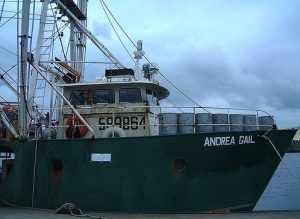 washed up on the shore of Sable Island in Nova Scotia…not the news they were hoping for. The EPIRB was designed to automatically send out a distress signal upon contact with sea water, but the Canadian Coast Guard personnel who found the beacon “did not conclusively verify whether the control switch was in the on or off position”. By November 9th, authorities officially called off the search for the missing Andrea Gail, due to the low probability of crew survival. Fuel drums, a fuel tank, the EPIRB, an empty life raft, and some other flotsam were the only wreckage ever found. The ship was presumed lost at sea somewhere along the continental shelf near Sable Island. Sometimes, overdue is the worst possible situation.
washed up on the shore of Sable Island in Nova Scotia…not the news they were hoping for. The EPIRB was designed to automatically send out a distress signal upon contact with sea water, but the Canadian Coast Guard personnel who found the beacon “did not conclusively verify whether the control switch was in the on or off position”. By November 9th, authorities officially called off the search for the missing Andrea Gail, due to the low probability of crew survival. Fuel drums, a fuel tank, the EPIRB, an empty life raft, and some other flotsam were the only wreckage ever found. The ship was presumed lost at sea somewhere along the continental shelf near Sable Island. Sometimes, overdue is the worst possible situation.
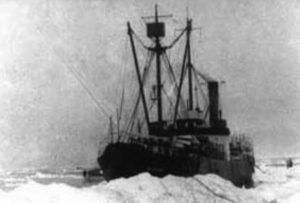 Ghost ships have been a prominent tale of mystery over the years. Many say that seeing a ghost ship is an omen of doom, which I do not believe in, nor do I believe in ghosts or ghost ships, but there was a ship that was dubbed a ghost ship, and has had the longest standing as a possible ghost ship in history, at least to my knowledge. The SS Baychimo was a cargo ship that was built in 1914 in Sweden. It was used for trading routes between Hamburg and Sweden. After World War I, the ship was sold to the Hudson’s Bay Company. The ship made numerous sailings for Hudson’s, mostly carrying cargo to and from the Arctic region.
Ghost ships have been a prominent tale of mystery over the years. Many say that seeing a ghost ship is an omen of doom, which I do not believe in, nor do I believe in ghosts or ghost ships, but there was a ship that was dubbed a ghost ship, and has had the longest standing as a possible ghost ship in history, at least to my knowledge. The SS Baychimo was a cargo ship that was built in 1914 in Sweden. It was used for trading routes between Hamburg and Sweden. After World War I, the ship was sold to the Hudson’s Bay Company. The ship made numerous sailings for Hudson’s, mostly carrying cargo to and from the Arctic region.
The Baychimo had a lucrative career until October 1, 1931, when it was on a routine voyage, filled with recently acquired furs. An unexpected storm blew in, trapping the ship in a sea filled with ice. The closest city was Barrow, Alaska, the northern most city in the United States, and almost like being on top of the world, but it was too far to get to in the blowing snow and high winds. The captain and crew had to stay inside the trapped ship, where they hoped to wait out the storm. This storm was the beginning of the more bizarre part of Baychimo’s life.
When October 15th rolled around, the ship could still be found stuck in the ice, so 15 of the crew members were airlifted to safety. The captain and 14 other crew members made a temporary camp on the ice near the stranded ship…which turned out to be a very wise decision. The terrible weather continued to pound the crew and the “temporary” camp became home for weeks. Then, on November 24th, a fierce blizzard hit the area, and the snow was so heavy that the campers could no longer see the Baychimo, which was still trapped in the ice…or so they thought. The next morning, it was just as the expected. The ship had vanished. They assumed that it had been sunk by the preceding blizzard. The remaining crew made their way back to civilization.
Then, less than a week later, a hunter told the captain that the Baychimo could not have sunk, as he had just seen it floating in the icy waters almost fifty miles from the location where it had been abandoned. The captain was, understandably reluctant to battle the snows to try and find the ship, knowing that it could be miles for the last known location. Nevertheless, he gathered his crew and went looking. Just as the hunter had said, they found the Baychimo in the location the hunter had described. The ship looked like it was no longer seaworthy, so the captain didn’t think it would stay afloat much longer and would soon break apart and sink, so the crew gathered the cargo of furs and had everything, including the captain and the crew, airlifted out of the area.
The captain was wrong. The SS Baychimo was spotted again and again. In March of 1933, some Eskimos, trapped by a storm, took shelter in the Baychimo for a week until the weather improved enough to journey back to their homes. In November of 1939, another ship came close enough to the Baychimo that they were 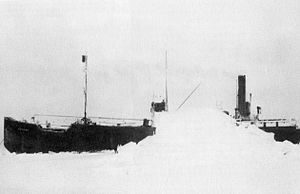 able to board the abandoned ship, but due to the approaching ice floes, the captain did not have the time to bring it back to a port, although he did report the empty ship’s location. In 1969, the Baychimo was spotted at a distance, once again trapped in an ice pack. This was the last recorded sighting of the ship, and after a few years it was commonly believed that the ship did eventually give in to its deteriorating condition and sank to the bottom of the frigid seas. Not everyone agreed though, because in 2006, seventy-five years after the ship was first abandoned, the state of Alaska formally began an effort to find the mysterious SS Baychimo, the Arctic’s elusive wandering ship.
able to board the abandoned ship, but due to the approaching ice floes, the captain did not have the time to bring it back to a port, although he did report the empty ship’s location. In 1969, the Baychimo was spotted at a distance, once again trapped in an ice pack. This was the last recorded sighting of the ship, and after a few years it was commonly believed that the ship did eventually give in to its deteriorating condition and sank to the bottom of the frigid seas. Not everyone agreed though, because in 2006, seventy-five years after the ship was first abandoned, the state of Alaska formally began an effort to find the mysterious SS Baychimo, the Arctic’s elusive wandering ship.
 On April 10, 1912, Titanic set sail from Southampton. Titanic called at Cherbourg in France and Queenstown (now Cobh) in Ireland before heading west to New York. For the passengers and crew, Titanic was the ultimate in luxury, and to be on it was the ultimate thrill. The ship was the most luxurious ship of its day, and to add to their sense of excitement, it was unsinkable. The passengers were assured that the ship had so many fail-safes in place that the builders didn’t even think the lifeboats were necessary, and any that were considered to be in the way, were removed, in what would prove to be a fatal mistake. In the end, there were 20 lifeboats on board the ship, when she was supposed to have 64 lifeboats. Each had a capacity of 65 people. Most lifeboats were lowered to the water with less than half their actual capacity.
On April 10, 1912, Titanic set sail from Southampton. Titanic called at Cherbourg in France and Queenstown (now Cobh) in Ireland before heading west to New York. For the passengers and crew, Titanic was the ultimate in luxury, and to be on it was the ultimate thrill. The ship was the most luxurious ship of its day, and to add to their sense of excitement, it was unsinkable. The passengers were assured that the ship had so many fail-safes in place that the builders didn’t even think the lifeboats were necessary, and any that were considered to be in the way, were removed, in what would prove to be a fatal mistake. In the end, there were 20 lifeboats on board the ship, when she was supposed to have 64 lifeboats. Each had a capacity of 65 people. Most lifeboats were lowered to the water with less than half their actual capacity.
The night of April 14, 1912 was very cold, and the route Titanic was on was littered with icebergs. Other ships 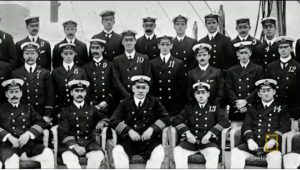 in the area tried to warn Titanic, but the radio operator of Titanic did not take the warnings seriously. He was operating under the mistaken idea that Titanic could sail right through any ice field she might come upon, and have no problems whatsoever. The radio operator was wrong. Nevertheless, he shut of the radio after the 6th warning transmission. The iceberg strike came at 11:40 pm…but the first distress call was sent almost an hour later and even then the ships receiving the calls could did not believe it could be real. Finally, at 12:40 am, Carpathia’s radio operator gave the call to head for Titanic’s last known position.
in the area tried to warn Titanic, but the radio operator of Titanic did not take the warnings seriously. He was operating under the mistaken idea that Titanic could sail right through any ice field she might come upon, and have no problems whatsoever. The radio operator was wrong. Nevertheless, he shut of the radio after the 6th warning transmission. The iceberg strike came at 11:40 pm…but the first distress call was sent almost an hour later and even then the ships receiving the calls could did not believe it could be real. Finally, at 12:40 am, Carpathia’s radio operator gave the call to head for Titanic’s last known position.
Help would come too late for Titanic. By 2:20 am on April 15, 1912, Titanic sank, but she was not without her heroes. As the Titanic was sinking, the deck crew began loading passengers onto lifeboats. The engineering crew stayed at their posts to work the pumps, controlling flooding as much as possible. This action ensured the  power stayed on during the evacuation and allowed the wireless radio system to keep sending distress calls. These men bravely kept at their work and helped save more than 700 people…even though it would cost them their own lives. When Titanic went down, she took with her 1500 people. of those, 688 were crew members, including all 25 of the engineers who worked tirelessly, at their own peril to buy what little bit of time they could for the passengers in their care. Many of the crew members forfeited their lives so that the passengers might live. Were serious mistakes made…yes, of course, but by the same token, the sinking of Titanic saw some of the most amazing bravery ever.
power stayed on during the evacuation and allowed the wireless radio system to keep sending distress calls. These men bravely kept at their work and helped save more than 700 people…even though it would cost them their own lives. When Titanic went down, she took with her 1500 people. of those, 688 were crew members, including all 25 of the engineers who worked tirelessly, at their own peril to buy what little bit of time they could for the passengers in their care. Many of the crew members forfeited their lives so that the passengers might live. Were serious mistakes made…yes, of course, but by the same token, the sinking of Titanic saw some of the most amazing bravery ever.
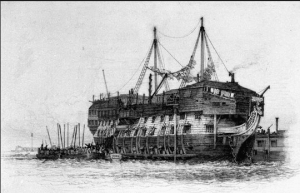 The reasons that Britain decided to start a Penal Colony at Botany Bay, Australia are not fully agreed upon. Some say that that there were deeper motives than just a place to house their criminals. The soil at Botany Bay was perfect for growing flax. I suppose that the prisoners would need to be doing some kind of work as penance for their crimes. Nevertheless, Britain would be making a profit from the flax that was produced thee, and the bay was perfect for a port, which would be necessary to assist with trade. All in all, Botany Bay seemed like the best option for a penal colony for Britain, so the plans were put in place, and before long the penal colony became a reality.
The reasons that Britain decided to start a Penal Colony at Botany Bay, Australia are not fully agreed upon. Some say that that there were deeper motives than just a place to house their criminals. The soil at Botany Bay was perfect for growing flax. I suppose that the prisoners would need to be doing some kind of work as penance for their crimes. Nevertheless, Britain would be making a profit from the flax that was produced thee, and the bay was perfect for a port, which would be necessary to assist with trade. All in all, Botany Bay seemed like the best option for a penal colony for Britain, so the plans were put in place, and before long the penal colony became a reality.
When Governor Phillip arrived in 1788, he asked for carpenters, masons, bricklayers to help set up the colony, along with many tools of the trades. In January of 1788, the first 736 convicts banished from England to Australia arrived in Botany Bay. Over the next 60 years, approximately 50,000 criminals were transported from Great Britain to the Botany Bay in one of the strangest episodes in criminal-justice history. I think many of us have thought that some criminals should be place on a deserted island, but Britain basically did just that…with every criminal, it seems.
The accepted wisdom of the upper and ruling classes in 18th century England was that criminals were inherently defective. They did not believe criminals could be rehabilitated and that they simply required separation from the genetically pure, law-abiding citizens. Consequently, lawbreakers had to be either killed or exiled, because prisons were too expensive, and they criminals were not worth the money. With the American victory in the Revolutionary War, transgressors could no longer be shipped off across the Atlantic, so the English had to look for a colony in some other direction.
Captain Arthur Phillip, a tough but fair career naval officer, was charged with setting up the first penal colony in Australia. The convicts were chained beneath the deck during the entire hellish six-month voyage. The first voyage claimed the lives of nearly 10 percent of the prisoners, which remarkably proved to be a rather good rate. On later trips, up to a third of the unwilling passengers died on the way. These were not hardened criminals by any measure; only a small minority were transported for violent offenses. Among the first group was a 70-year-old woman who had stolen cheese to eat.
Although not confined behind bars, most convicts in Australia had an extremely tough life. The guards who volunteered for duty in Australia seemed to be driven by exceptional sadism. Even small violations of the rules could result in a punishment of 100  lashes with a whip. It was said that blood was usually drawn after five lashes, but they didn’t stop there. Convicts usually ended up walking home in boots filled with their own blood, if they could walk at all. Convicts who attempted to escape were sent to tiny Norfolk Island, 600 miles east of Australia. The conditions there were even more inhumane. The only hope of escape from the horror of Norfolk Island was a “game” in which groups of three prisoners drew straws. The short straw was killed as painlessly as possible and a judge was then shipped in to put the other two on trial, one playing the role of killer, the other as witness. I guess the only hope of escape was, in reality, death. There were no second chances for them.
lashes with a whip. It was said that blood was usually drawn after five lashes, but they didn’t stop there. Convicts usually ended up walking home in boots filled with their own blood, if they could walk at all. Convicts who attempted to escape were sent to tiny Norfolk Island, 600 miles east of Australia. The conditions there were even more inhumane. The only hope of escape from the horror of Norfolk Island was a “game” in which groups of three prisoners drew straws. The short straw was killed as painlessly as possible and a judge was then shipped in to put the other two on trial, one playing the role of killer, the other as witness. I guess the only hope of escape was, in reality, death. There were no second chances for them.
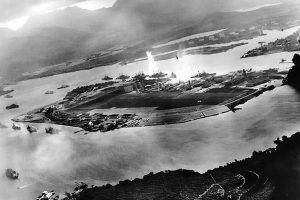 When we think of the attack on Pearl Harbor, we mostly think of the events that took place at Pearl Harbor, but that attack was felt far and wide. I’m sure there are many stories, But this one struck me as particularly poignant. The Japanese bombing of the US naval base in Pearl Harbor 75 years ago sent a seismic shock around the world. Nicholas Best charts how stunned onlookers across the planet…from Dirk Bogarde to Adolf Hitler to Mao Zedong…reacted to the news. Their reactions might have been interesting, but I was moved by the thoughts and reactions of Joan Fawcett, who was simply a passenger on the Dutch ship Jägersfontein. Joan was just 21 years old that December 7th, and she was traveling to India from San Francisco. After several days at sea, she was looking forward to arriving in Honolulu soon after breakfast. Joan didn’t want to miss a moment as the ship approached the Hawaiian island of Oahu from the south.
When we think of the attack on Pearl Harbor, we mostly think of the events that took place at Pearl Harbor, but that attack was felt far and wide. I’m sure there are many stories, But this one struck me as particularly poignant. The Japanese bombing of the US naval base in Pearl Harbor 75 years ago sent a seismic shock around the world. Nicholas Best charts how stunned onlookers across the planet…from Dirk Bogarde to Adolf Hitler to Mao Zedong…reacted to the news. Their reactions might have been interesting, but I was moved by the thoughts and reactions of Joan Fawcett, who was simply a passenger on the Dutch ship Jägersfontein. Joan was just 21 years old that December 7th, and she was traveling to India from San Francisco. After several days at sea, she was looking forward to arriving in Honolulu soon after breakfast. Joan didn’t want to miss a moment as the ship approached the Hawaiian island of Oahu from the south.
Many other passengers were up early too. They were all enjoying the view of Diamond Head as they prepared to enter harbor. To add to the fun, the US navy was carrying out some sort of naval exercise ahead of them. As Joan later recalled: “I noticed a few puffs of grey smoke in the sky, just over the harbor, and as they seemed  strange clouds I asked the boys what explanation they could give and we decided that they were the puffs from anti-aircraft fire. By this time there were many grey spots and soon we could hear the report of the guns. We thought it was just a practice maneuver and a welcome salute for us. By nine o’clock we had had breakfast and were all up on deck watching the planes fly over. We did see things drop into the water, and one only 50 yards away, but thought nothing more of it. Later we heard eight bombs were aimed at our ship. We made a beautiful target for we were entering the harbor, and being in the mined area could not swerve left or right in the cleared channel. We were thoroughly enjoying the display.” The ship’s agent hurried aboard as soon as they docked. He told the passengers it was no exercise. The US Navy’s Pacific fleet up the coast at Pearl Harbor was being attacked by the Japanese. Within hours, news of the outrage was racing around the world, leaving people shocked, dismayed…and, in some cases, delighted…in its wake.
strange clouds I asked the boys what explanation they could give and we decided that they were the puffs from anti-aircraft fire. By this time there were many grey spots and soon we could hear the report of the guns. We thought it was just a practice maneuver and a welcome salute for us. By nine o’clock we had had breakfast and were all up on deck watching the planes fly over. We did see things drop into the water, and one only 50 yards away, but thought nothing more of it. Later we heard eight bombs were aimed at our ship. We made a beautiful target for we were entering the harbor, and being in the mined area could not swerve left or right in the cleared channel. We were thoroughly enjoying the display.” The ship’s agent hurried aboard as soon as they docked. He told the passengers it was no exercise. The US Navy’s Pacific fleet up the coast at Pearl Harbor was being attacked by the Japanese. Within hours, news of the outrage was racing around the world, leaving people shocked, dismayed…and, in some cases, delighted…in its wake.
Thinking about Joan Fawcett, I have wondered how she must have felt when she found out that they were  sailing right into a battle. She may not have known it at all until the agent rushed onboard to try to pull people to safety. Imagining the awe of the beautiful harbor, and then having the images dissolving into horror, fear, and death. Now she finds herself running for her life alongside all the other passengers, praying that they can get to safety before one of those bombs hits them. There is no place that is safe to go. It was chaos…everywhere. She and the rest of the passengers are caught in the middle of their worst nightmare, and they can never get those pictures out of their heads. Most of the people alive then, and anyone who has ever studied the attack, could never get that picture out of their head.
sailing right into a battle. She may not have known it at all until the agent rushed onboard to try to pull people to safety. Imagining the awe of the beautiful harbor, and then having the images dissolving into horror, fear, and death. Now she finds herself running for her life alongside all the other passengers, praying that they can get to safety before one of those bombs hits them. There is no place that is safe to go. It was chaos…everywhere. She and the rest of the passengers are caught in the middle of their worst nightmare, and they can never get those pictures out of their heads. Most of the people alive then, and anyone who has ever studied the attack, could never get that picture out of their head.
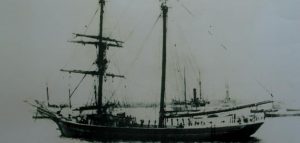 The Mary Celeste began its fateful voyage on November 7, 1872. She set sail with seven crewmen and Captain Benjamin Spooner Briggs, his wife, Sarah, and the couple’s 2-year-old daughter, Sophia. The 282 ton brigantine battled heavy weather for two weeks to reach the Azores. It was there that the ship logged its last entry at 5am on November 25, 1872. The rest of the story of the Mary Celeste remains a mystery, although the ship was found in good shape and completely sea-worthy.
The Mary Celeste began its fateful voyage on November 7, 1872. She set sail with seven crewmen and Captain Benjamin Spooner Briggs, his wife, Sarah, and the couple’s 2-year-old daughter, Sophia. The 282 ton brigantine battled heavy weather for two weeks to reach the Azores. It was there that the ship logged its last entry at 5am on November 25, 1872. The rest of the story of the Mary Celeste remains a mystery, although the ship was found in good shape and completely sea-worthy.
I find it strange to think that in the middle of the ocean, something can happen with little or no warning, that either takes the lives of people onboard a ship, or results in their disappearance. I understand mutiny, but then that does not leave a ship abandoned. So if not mutiny, how is it that the occupants of the ship did not see the other ship approaching? I know that pirates often overtook the ships, but the occupants of the ship were usually killed in a bloody battle. The people onboard did not just disappear. Nevertheless, something happened on the Mary Celeste between that final message on November 25, 1872 and December 5th, 1872, when she was spotted drifting along, in the Atlantic Ocean…empty.
The British brig Dei Gratia was about 400 miles east of the Azores on December 5, 1872, when crew members spotted a ship adrift in the choppy seas. Captain David Morehouse was shocked to discover that the unguided vessel was the Mary Celeste. It had left New York City eight days before him and should have already arrived in Genoa, Italy. He changed course to offer help. Morehouse sent a boarding party to the ship. When they went below decks, they discovered that the ship’s charts had been tossed about, and the crewmen’s belongings were still in their quarters. The ship’s only lifeboat was missing, and one of its two pumps had been disassembled. Three and a half feet of water was sloshing in the ship’s bottom, but the cargo of 1,701 barrels of industrial alcohol was largely intact. There was a six month supply of food and water…and no one to use it. So, the mystery began, and it has endured as one of the most durable mysteries in nautical history…What happened to the ten people who had sailed aboard the Mary Celeste? Over the many years since the discovery, a lack of hard evidence has only created more speculation as to what might have taken place. Theories have ranged from mutiny to pirates to sea monsters to killer waterspouts….some of which are completely ridiculous, but in the absence of evidence, people will speculate.
Arthur Conan Doyle’s 1884 short story based on the case posited a capture by a vengeful ex-slave, a 1935 movie featured Bela Lugosi as a homicidal sailor. Now, a new investigation, drawing on modern maritime technology and newly discovered documents, has pieced together the most likely scenario…which had nothing to do with Bela Lugosi. In fact, while it is unproven, it is thought that something a simple as coal dust could be the culprit. The idea is that the coal dust from a prior voyage filtered into the ships pumps, causing them to quit working. Then, it is thought that the captain, fearing that the ship would sink, ordered the passengers to abandon ship…well within sight of land at Azores. Anne MacGregor, the documentarian who launched the investigation and wrote, directed and produced The True Story of the ‘Mary Celeste,’ partly with funding from Smithsonian Networks. MacGregor learned that on its previous voyage, the Mary Celeste had carried coal and that the ship had recently been extensively refitted. Coal dust and construction debris could have fouled the ship’s pumps, which would explain the disassembled pump found on the Mary Celeste. With the pump inoperative, Briggs would not have known how much seawater was in his ship’s hull, which was too fully packed for him to measure visually. Of course, this is still speculation, because the ten people onboard were never heard from again, so the mystery continues.
to do with Bela Lugosi. In fact, while it is unproven, it is thought that something a simple as coal dust could be the culprit. The idea is that the coal dust from a prior voyage filtered into the ships pumps, causing them to quit working. Then, it is thought that the captain, fearing that the ship would sink, ordered the passengers to abandon ship…well within sight of land at Azores. Anne MacGregor, the documentarian who launched the investigation and wrote, directed and produced The True Story of the ‘Mary Celeste,’ partly with funding from Smithsonian Networks. MacGregor learned that on its previous voyage, the Mary Celeste had carried coal and that the ship had recently been extensively refitted. Coal dust and construction debris could have fouled the ship’s pumps, which would explain the disassembled pump found on the Mary Celeste. With the pump inoperative, Briggs would not have known how much seawater was in his ship’s hull, which was too fully packed for him to measure visually. Of course, this is still speculation, because the ten people onboard were never heard from again, so the mystery continues.

